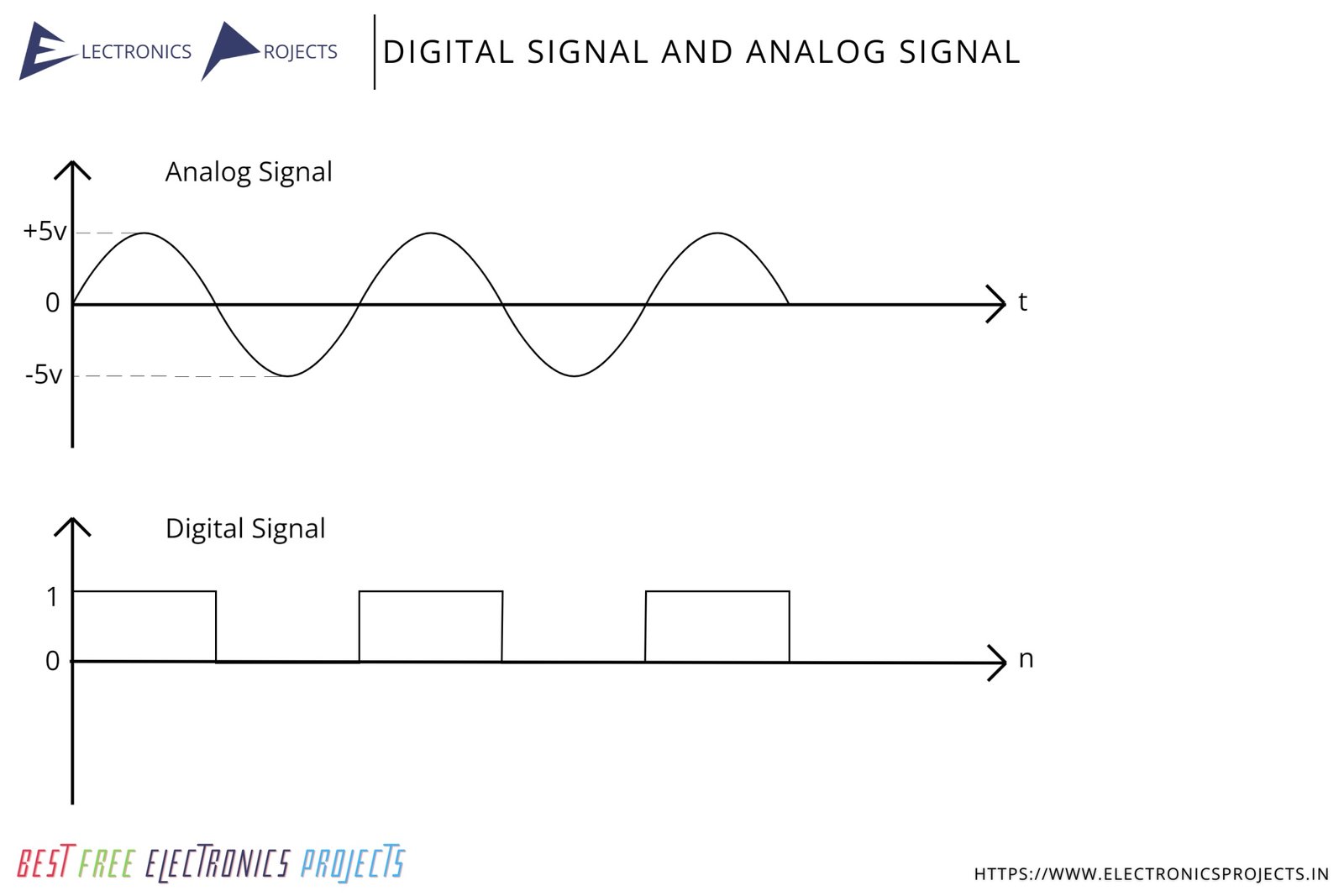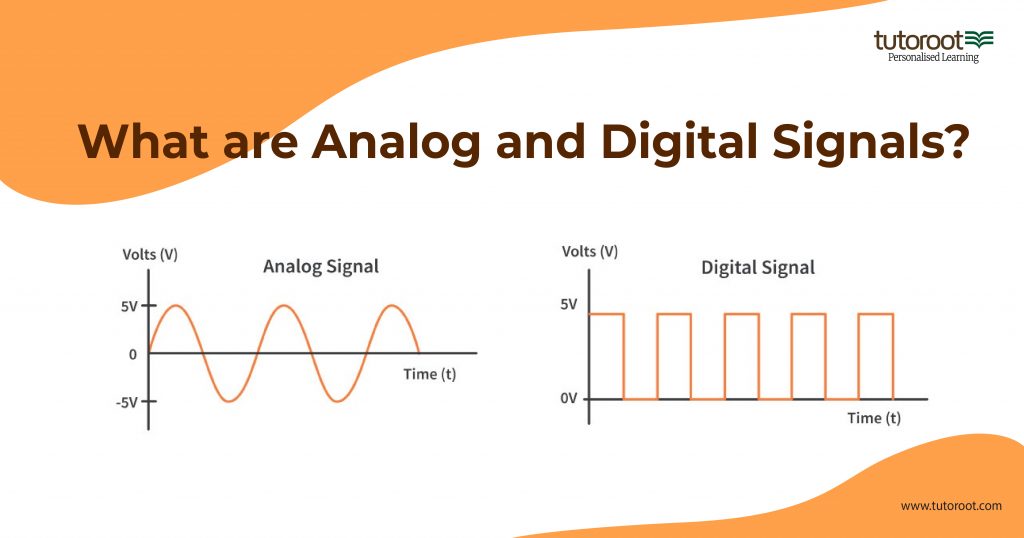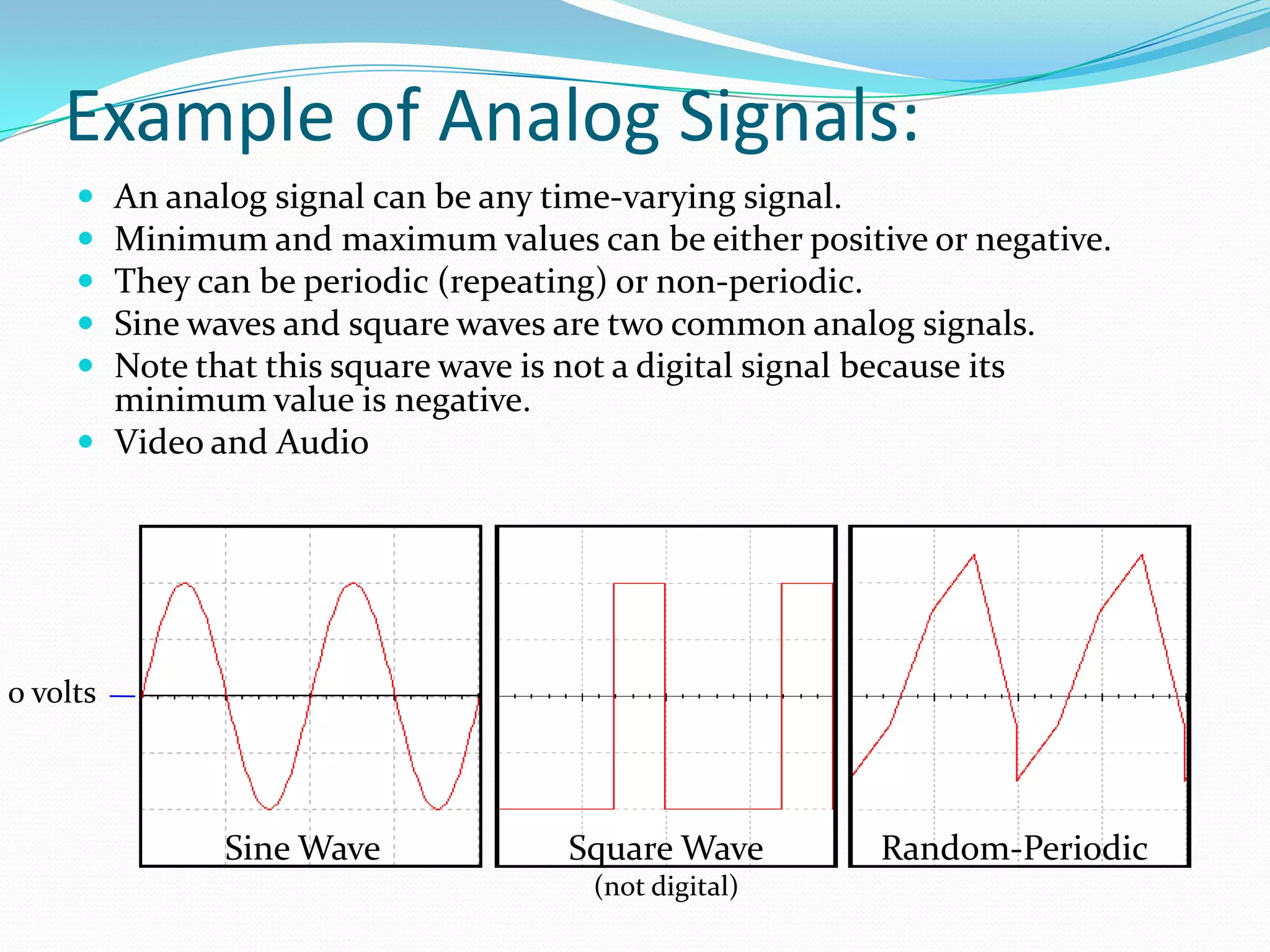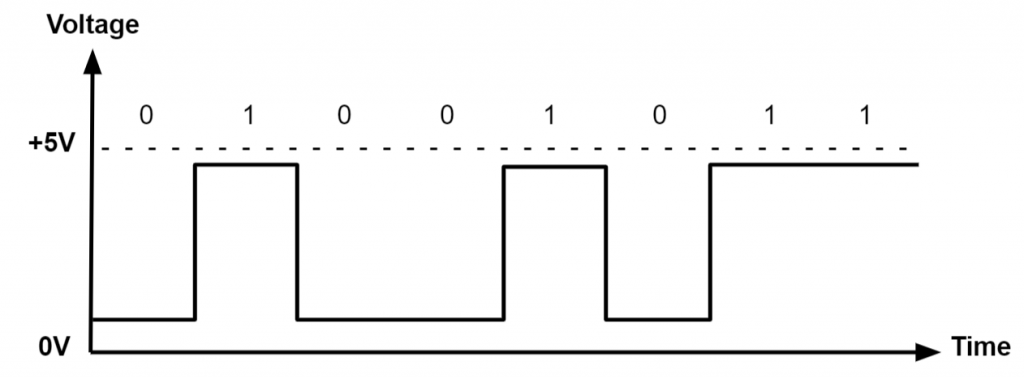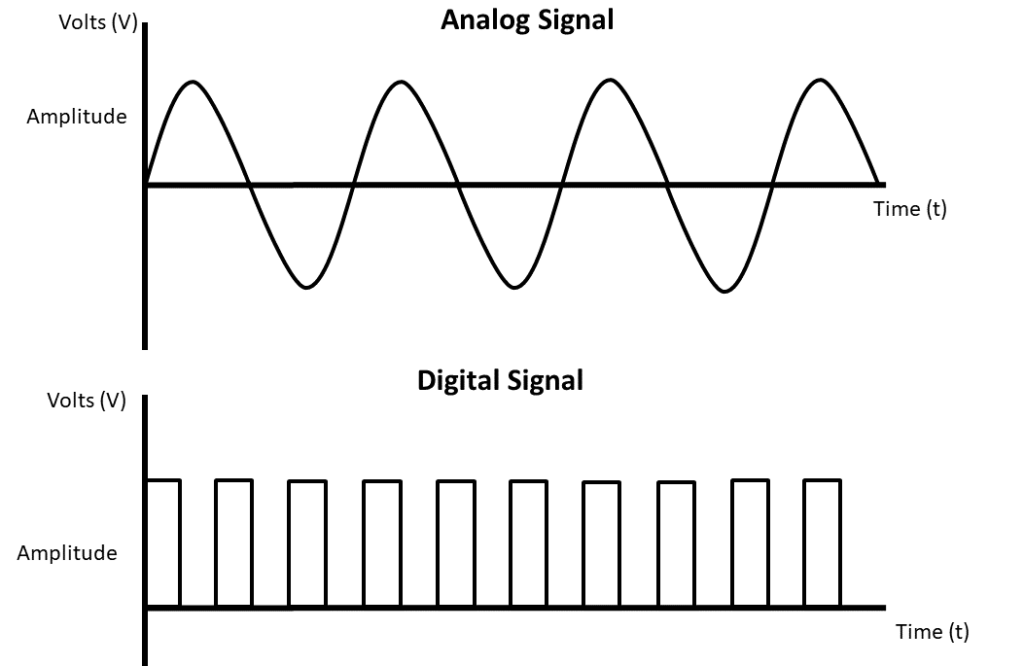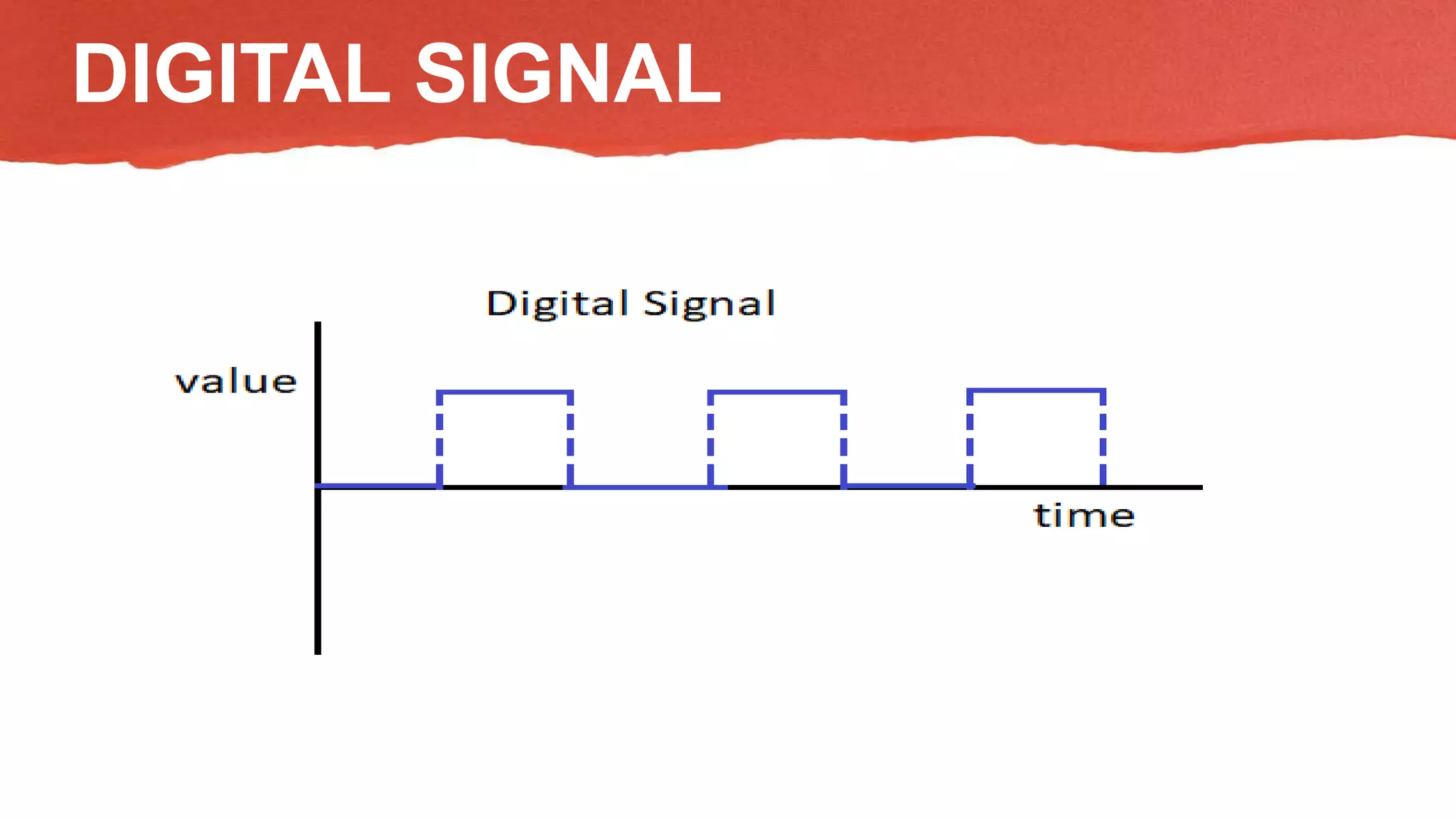1.2 2 Analog And Digital Signals
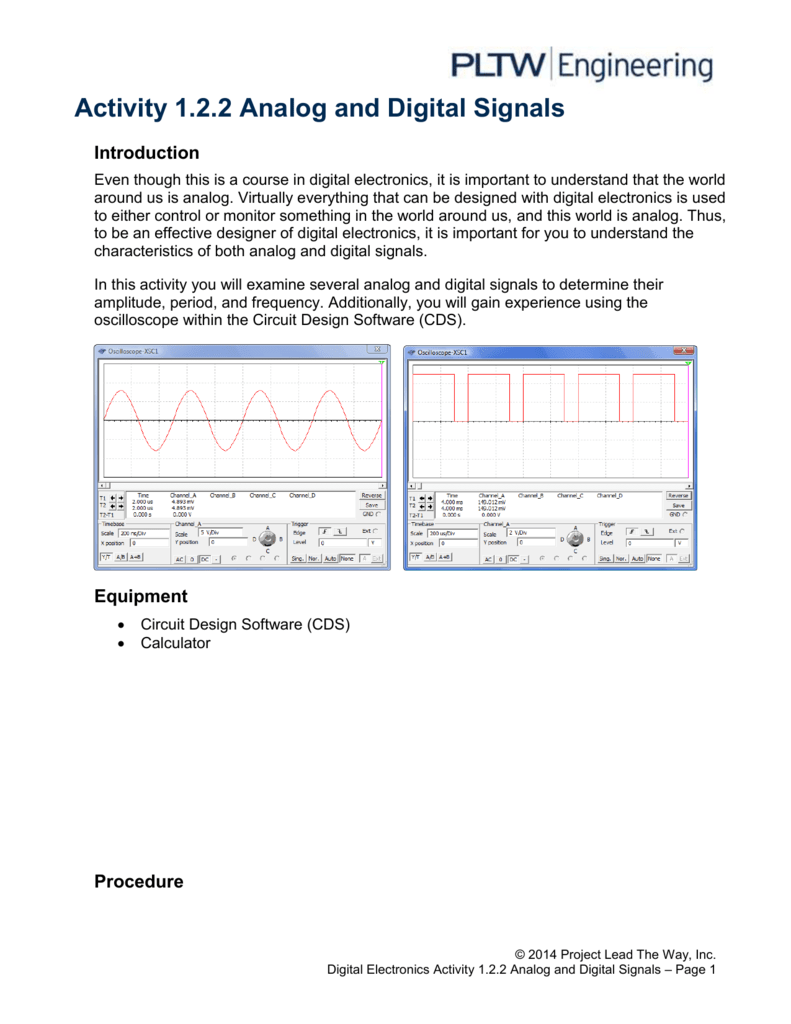
Imagine a vinyl record spinning, the needle tracing the grooves, translating those physical undulations into the rich, warm sounds that fill a room. Now, picture the crisp, clear audio streaming from your phone, compressed into digital packets, travelling wirelessly through the air. Both deliver music, both convey information, but the way they do it represents a fundamental difference in how we represent and transmit data: the world of analog and digital signals.
This article delves into the fascinating world of analog and digital signals, exploring their core characteristics, historical significance, modern applications, and the ongoing debate about their relative strengths and weaknesses. Understanding these fundamental concepts is crucial for navigating the increasingly complex technological landscape that shapes our lives.
The Analog Realm: A Continuous Wave
Analog signals are like that vinyl record – they are continuous representations of information. Think of a dimmer switch controlling the brightness of a light bulb; as you turn the knob, the light smoothly transitions between dim and bright, reflecting the continuously changing voltage.
This smooth, uninterrupted flow is the hallmark of analog. A microphone capturing your voice converts sound waves into a continuously varying electrical signal, mimicking the pressure fluctuations in the air.
Early forms of communication, like the telephone, relied heavily on analog signals. Alexander Graham Bell's invention transmitted voice by converting sound into electrical signals that mirrored the original sound waves, sending them down a wire.
The Beauty and the Burden
The inherent beauty of analog lies in its ability to represent subtle nuances and variations in information. Analog recording, for example, is often praised for capturing the warmth and richness of sound, something many argue is lost in the digital translation.
However, analog signals are susceptible to noise and distortion. As an analog signal travels through a wire or is amplified, it can pick up unwanted interference, which degrades the quality of the information being transmitted.
Each time an analog signal is copied, the noise is amplified along with the signal, leading to a gradual deterioration of the original information. This vulnerability is a major drawback compared to its digital counterpart.
The Digital Domain: Bits and Bytes
Digital signals, on the other hand, represent information as discrete values, typically using binary digits (bits) – 0s and 1s. Think of a light switch that is either on (1) or off (0); there's no in-between.
Instead of a continuous wave, a digital signal is a series of pulses, each representing a specific binary value. This discrete nature makes digital signals far more robust against noise and distortion.
The rise of the digital age is intertwined with the development of the transistor and the microchip. These innovations enabled the creation of powerful computers capable of processing and manipulating digital information with unprecedented speed and efficiency.
The Power of Precision and Processing
The key advantage of digital signals is their resilience to noise. Because digital signals only have two states (0 or 1), it's easier to distinguish the intended signal from any background noise.
Even if a digital signal is slightly distorted, it can be easily reconstructed at the receiving end, ensuring that the original information is preserved. This is why digital audio and video can be transmitted across vast distances without significant degradation.
Furthermore, digital information can be easily processed, compressed, and manipulated using computers. Digital audio can be edited, mixed, and mastered with a precision that was impossible with analog techniques.
Analog vs. Digital: A Continued Coexistence
While digital technology dominates many aspects of modern life, analog signals haven't disappeared entirely. In fact, they continue to play crucial roles in various applications.
Microphones, for example, still produce analog signals, which are then converted to digital signals for processing and storage. Many sensors used in scientific and industrial applications also output analog signals.
The choice between analog and digital often depends on the specific application and the trade-offs between accuracy, noise immunity, and processing power. Some argue that analog is better for certain applications, such as audio recording, because it captures a more natural and nuanced sound.
The Hybrid Approach
In many cases, the best solution is a hybrid approach that combines the strengths of both analog and digital technologies. For example, a modern audio recording system might use high-quality analog microphones to capture sound, then convert the signal to digital for editing and distribution.
This allows for the preservation of the natural sound characteristics while benefiting from the processing power and noise immunity of digital technology.
Digital-to-analog converters (DACs) and analog-to-digital converters (ADCs) are essential components in these hybrid systems, bridging the gap between the analog and digital worlds.
The Future of Signals: A Blending of Worlds
The future of signal processing is likely to involve an even greater integration of analog and digital technologies. As technology advances, we can expect to see more sophisticated hybrid systems that leverage the unique strengths of both approaches.
Researchers are also exploring new ways to represent and transmit information, such as using quantum signals, which offer the potential for even greater security and processing power. The development of neuromorphic computing, which mimics the structure and function of the human brain, is another promising area of research.
Whether we're enjoying the warmth of a vinyl record or streaming a high-definition movie, the underlying principles of analog and digital signals continue to shape the way we experience the world around us. Understanding these fundamental concepts is crucial for navigating the ever-evolving technological landscape.
Ultimately, the story of analog and digital signals is a story of innovation, adaptation, and the ongoing quest to represent and transmit information in the most efficient and effective way possible. The interplay between these two worlds will continue to drive technological progress for years to come.
